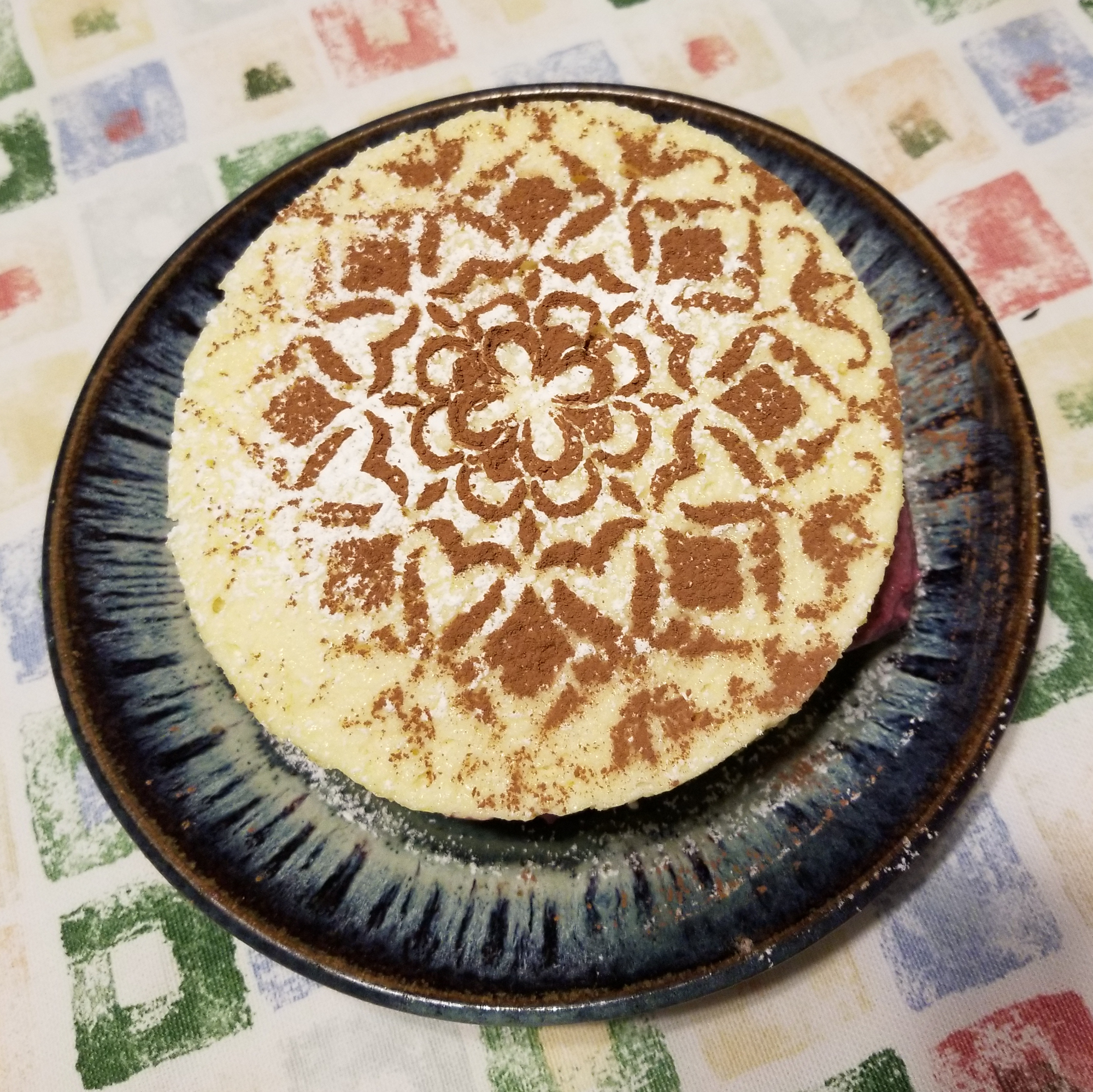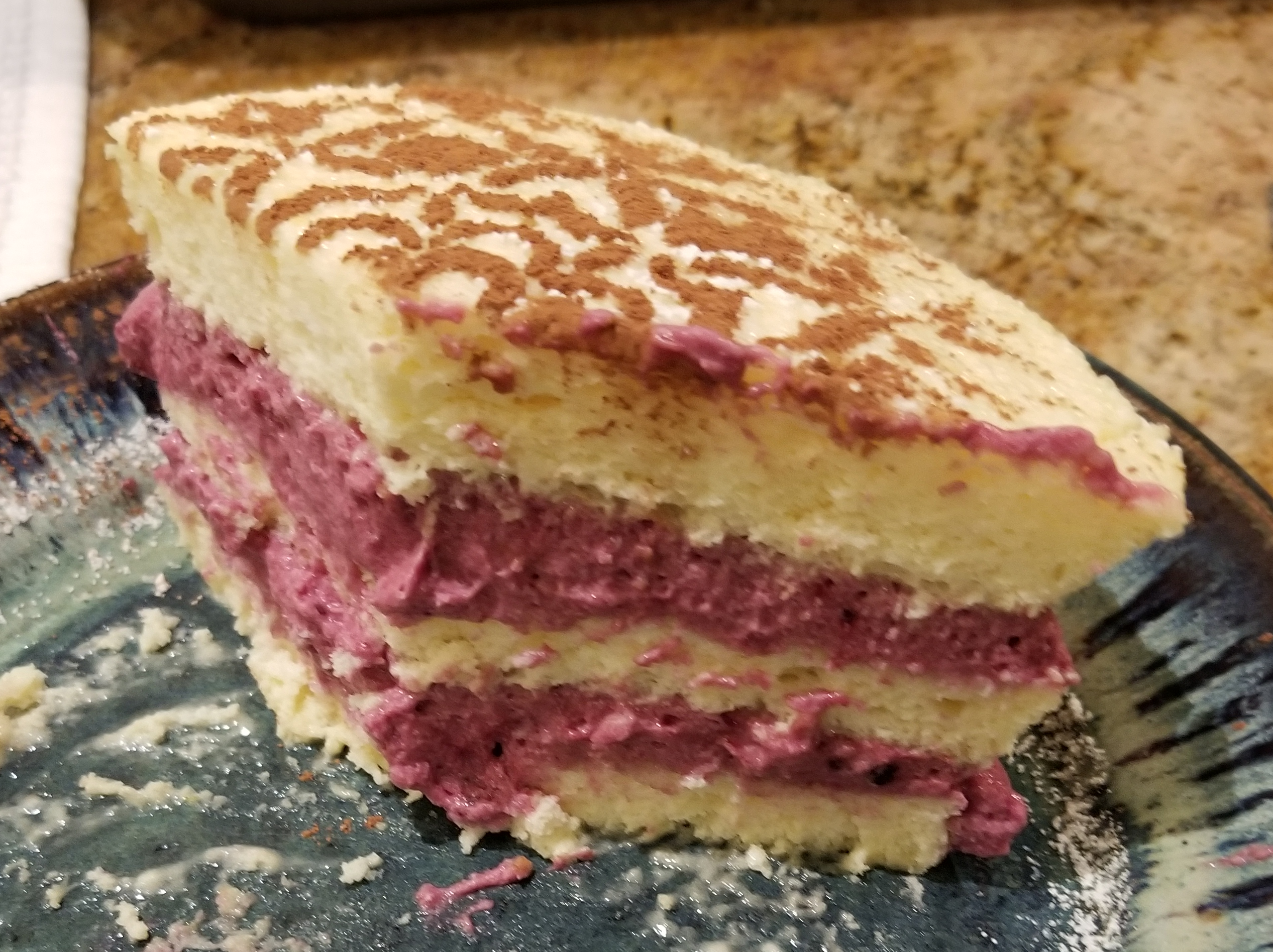In the Before Time, when I regularly had dinner in restaurants, there was always an exciting moment when the waiter started reciting the dessert specials. Sometimes the first few words were enough: I'd listen politely to the whole list, but the fact is, he had me as soon as he said "strawberry and chocolate". Or "pear and walnut". Or "ginger peach".
There are so many iconic flavor combinations in desserts, and if this blog goes on long enough, I'll visit them all. For me, chocolate and berries are almost always a great pairing. And so today...blackberry and white chocolate cake.

I hesitated to even call this a cake; it has a number of unusual features. First of all, it contains absolutely no flour. This not only makes the cake layers unusually tender and silky, it also seems to intensify the chocolate flavor. In my mind, it represents some extreme of what a cake can be: light and airy, silky and moist, chocolate-y and decadent. Today's version is a white chocolate rendition, but I promise there is a dark chocolate version on the horizon.
The cake layers are alternated with layers of mousse. This mousse is also unusual: it's made much like chocolate mousse, but with a jammy fruit compote instead of chocolate. I ran across the recipe long ago, and have never seen another like it. It contains no gelatin, and will separate if allowed to sit too long. It reminds me of a really good blackberry sorbet, with a sharp fresh-fruit flavor and a divinely airy texture.

This cake has no frosting, and needs none. It's so light that frosting would just weigh it down. You can serve it perfectly plain, or garnish it with a sprinkle of cocoa powder, a grating of dark chocolate, or a few fresh berries, if you're feeling fancy.
Putting all this together results in a cake that is cloud-like on the plate and pretty to look at ... but most importantly, a flavor sensation not easily forgotten.
Inspiration
Life takes funny turns sometimes. I started out trying to create a half-size version of a roulade I remember making a decade ago, and I ended up with a layer cake that has essentially none of the flavors of the original. And yet, every step of the way seemed like a logical evolution of the recipe.
I think I first made a flourless roulade when the Office Manager was diagnosed with celiac disease. In those days, gluten-free flours were generally unspeakably bad terrible nasty disappointing, so any baked good that was actually flourless would catch my eye. I have two similar versions of dark chocolate roulade in two different cookbooks: Elizabeth Wolf Cohen's The Chocolate Cookbook and Betty Rosbottom's Cooking School Cookbook. Judging from the spatters on the pages, I'm pretty sure I've made them both in the past. The full-size roulade was very popular here at Half-Size Headquarters, and was usually paired with quartered fresh strawberries stirred into sweetened whipped cream. I thought I could re-create that cake in half-size version, and came to a sad conclusion: a half-size cake is harder to roll than a full-size cake. Every attempt split right through when I tried to roll it up.
I still want to figure out how to make that half-size chocolate roll, but eating the split, rejected roulades (messy, but unmistakably delicious) got me thinking: isn't there a way to get the same taste and texture, but with less swearing and frustration? The secret is to divide the roulade batter among an appropriate number of layers, and then handle each layer as little as possible to avoid breakage once it is baked. I had also made enough dark chocolate roulades in quick succession that I was looking for new flavors. Would white chocolate work just as well? Indeed, it does.
White chocolate cake seemed to call for some visual, as well as flavor, contrast. That's when I thought of this mousse. The original was a raspberry mousse from "Raspberry Mousse Pie in a Brownie Fudge Crust" in Betty Rosbottom's Cooking School Cookbook. This was another recipe that I had been wanting to both half-size and simplify: the original is not only large, but I always found the gluten-free version of the brownie crust, although delicious, to be prone to cracking. Again, I wanted to move away from desserts that fall apart and leave you frustrated at the moment of serving.
Betty's mousse recipe called for raspberries frozen in heavy syrup, which were commonly available when she wrote the cookbook; I have adapted the recipe to use unsweetened raspberries instead. This time, I used blackberries, which give a very similar, but slightly stronger, flavor.

Comments powered by Talkyard.